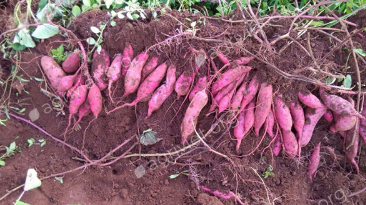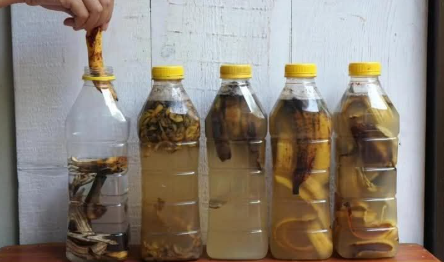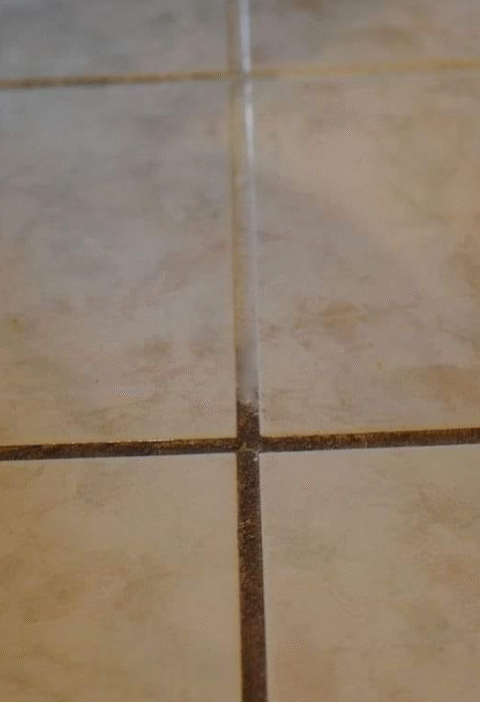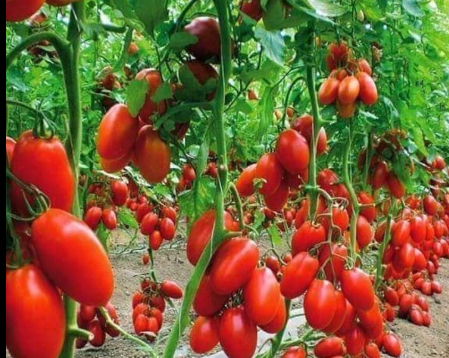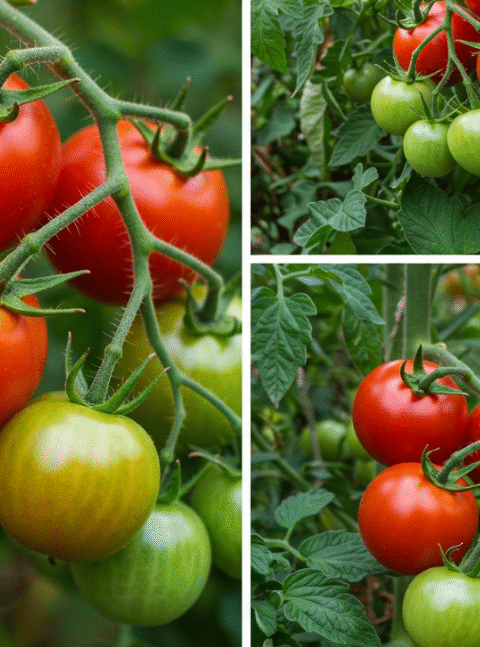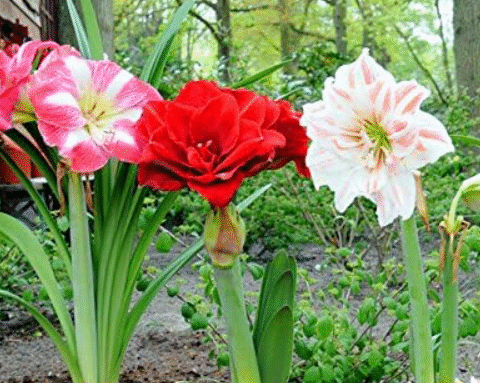How to Grow Sweet Potatoes in Containers: A Complete Step-by-Step Guide 🥔🌿
Sweet potatoes are more than just a flavorful addition to your meals—they’re also a rewarding and surprisingly easy crop to grow, even in limited space. With container gardening, anyone can grow sweet potatoes on patios, balconies, or small backyards, all while enjoying control over soil quality and moisture levels.
This step-by-step guide will show you how to grow sweet potatoes in containers successfully—from selecting the right pot to harvesting a healthy crop you can roast, bake, or mash to perfection. Let’s dig in! 🌱
Step 1: Choose the Right Container
Sweet potatoes need ample room to spread their roots and develop tubers, making container size a critical first step.
Container Requirements:
- Size: At least 15–20 gallons in capacity and 12–18 inches deep.
- Material: Plastic, clay, or fabric grow bags (fabric preferred for air flow and drainage).
- Drainage: Must include drainage holes to prevent soggy soil and root rot.
Step 2: Prepare the Soil Mix
Good soil is key to healthy tuber formation. Sweet potatoes thrive in light, nutrient-rich soil that drains well.
Ideal Soil Mix:
- 1 part high-quality potting soil
- 1 part compost or aged manure
- ½ part coarse sand or perlite for drainage
- Slow-release fertilizer (10-10-10) mixed in at planting time
Tip: Maintain a slightly acidic soil pH of 5.8–6.2 for optimal growth. Use a pH meter to check and amend if needed.
Step 3: Select the Right Sweet Potato Variety
Choose bush or compact varieties that perform well in containers for the best yields in small spaces.
Top Varieties for Containers:
- ‘Beauregard’: High-yielding, classic orange-flesh sweet potato.
- ‘Bush Porto Rico’: Compact growth ideal for containers.
- ‘Georgia Jet’: Fast-maturing, prolific producer.
Start with slips (young shoots from mature sweet potatoes), which can be purchased or sprouted at home from store-bought tubers.
Step 4: Plant the Sweet Potato Slips
Planting Process:
- Fill your container with the prepared soil mix, leaving 2–3 inches at the top.
- Create planting holes 4–6 inches deep and 12 inches apart.
- Place each slip into a hole, burying lower leaves and roots.
- Gently firm the soil and water thoroughly after planting.
Spacing Tip: If planting more than one slip in a container, ensure ample spacing to avoid root crowding.
Step 5: Water and Care for Your Plants
Sweet potatoes love warmth and consistent moisture—but they hate soggy soil. Here’s how to strike a balance:
Watering Guidelines:
- Frequency: Water 1–2 times per week, more often during hot spells.
- Soil Check: Stick your finger 2 inches into the soil; water if it feels dry.
- Drainage: Ensure excess water flows out freely to prevent root rot.
Step 6: Fertilize to Support Growth
Feed your plants right to promote tuber development instead of just leafy vines.
Fertilizing Tips:
- Use a balanced 10-10-10 fertilizer at planting.
- Switch to a 5-10-10 or low-nitrogen blend once vines begin growing.
- Fertilize every 4–6 weeks throughout the growing season.
Warning: Excess nitrogen = big leaves, small tubers. Balance is key!
Step 7: Watch for Pests and Diseases 🐛
Container-grown sweet potatoes face fewer issues but should still be monitored regularly.
Common Issues:
- Aphids: Tiny pests that cluster on leaves.
- Spider Mites: Cause yellowing and webbing.
- Root Rot: From poor drainage and overwatering.
Prevention and Treatment:
- Inspect plants weekly for pests or damage.
- Use neem oil or insecticidal soap for infestations.
- Improve drainage and allow soil to dry between watering to avoid root rot.
Step 8: Harvest and Cure Your Sweet Potatoes
Depending on variety, sweet potatoes mature in 90–120 days. When vines yellow and die back, it’s time to dig in!
Harvesting Tips:
- Gently dig around base of plants with hands or a trowel.
- Lift tubers carefully to avoid bruising.
- Brush off soil—do not wash until ready to use.
Curing Tip: Cure in a warm (80–85°F), humid space for 7–10 days. This enhances sweetness and storage life.
Nutrition and Yield Benefits Table 📊
| Feature | Details | Why It Matters |
|---|---|---|
| Container Size | 15–20 gallons | Ensures adequate root space for tubers |
| Soil pH | 5.8–6.2 | Optimal for nutrient absorption |
| Time to Harvest | 90–120 days | Plan for your growing season |
| Calories per cup (cooked) | ~180 | Energy-rich, healthy carbs |
| Vitamin A content | ~770% DV | Supports vision & immune health |
10 Common FAQs About Growing Sweet Potatoes in Containers
- Can I grow sweet potatoes indoors?
Yes, if you have a sunny window or grow lights and adequate space for large containers. - When should I plant sweet potatoes?
After all danger of frost has passed and temperatures are consistently above 60°F. - Do I need to hill up soil like in-ground sweet potatoes?
No—just ensure deep enough containers with loose soil. - How many slips per container?
1–3 slips, depending on container size (1 slip per 5 gallons is ideal). - What causes small or no tubers?
Too much nitrogen, overcrowding, or compacted soil. - Can I reuse soil next year?
It’s best to refresh or rotate soil to avoid disease and nutrient depletion. - How do I grow slips at home?
Place half of a sweet potato in water and let it sprout in a sunny spot. Separate shoots when they’re 5–6 inches long. - Do sweet potatoes flower?
Yes, they produce small, trumpet-shaped flowers but not all varieties do. - How long can harvested sweet potatoes last?
When cured and stored in a cool, dry place, they can last up to 6 months. - Can I grow sweet potatoes from grocery store tubers?
Yes, though ensure they’re organic and untreated with growth inhibitors.
Final Thoughts 🌿
Growing sweet potatoes in containers isn’t just space-efficient—it’s a deeply satisfying way to enjoy one of nature’s most nutritious root vegetables. With the right soil, container, variety, and care, you’ll be well on your way to harvesting a sweet and hearty crop right from your patio or balcony.
So roll up your sleeves, plant those slips, and prepare for a bountiful harvest you’ll be proud to eat. 🍠 Happy growing!

